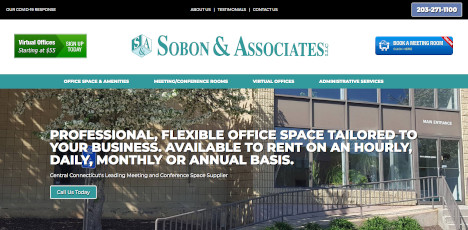Keeping your email secure is a top priority for any business. Your customers, suppliers, and partners can reach out to you directly or search for relevant information through your company’s social media channels. Unfortunately, not all companies consider email an option when replying to customer requests or posting information about their company on social media sites. However, spam accounts have become so sophisticated that they can easily circumvent any attempt by the user to flag an incoming message as spam or a genuine request for information. If you’re receiving unsolicited emails from sources you don’t recognize, you may want to take action before it becomes too late. Read on to learn how to protect your email secure from scams and phishing attacks.
Safeguarding Your Email: Essential Steps to Prevent Scams, Phishing Attacks, and Ensure Data Security
In today's digital age, email has become an indispensable tool for businesses, enabling seamless communication with customers, suppliers, and partners. However, this dependency on email also exposes businesses to potential threats, such as scams, phishing attacks, and data breaches. Therefore, safeguarding your email security is paramount to protecting your business reputation, customer trust, and sensitive information.
Unfortunately, not all companies prioritize email security. Some may overlook email as a communication channel for customer interactions or neglect to implement proper security measures on their social media platforms. This laxity can leave businesses vulnerable to sophisticated spam accounts that can bypass standard spam filters and pose as legitimate communications.
If you've noticed an influx of unsolicited emails from unknown senders, it's crucial to take preventive measures before it's too late. This guide will equip you with the knowledge and strategies to safeguard your email from scams, phishing attacks, and ensure data security.

What to Look For When You Receive an Email from a Scammer or Fraudster?
Scammers and fraudsters are always on the lookout for new ways to take advantage of unsuspecting individuals and businesses. One of their favorite methods is to send phishing emails. These are messages that appear to be legitimate but are actually designed to trick you into giving away personal information.

Pay attention to have secure email. So, how can you tell if an email is a phishing scam? Here are some things to look out for:
1. Suspicious Sender
One of the first things to check is the sender's email address. If it looks suspicious or unfamiliar, it’s probably a scam. Sometimes, scammers will use a similar email address to a legitimate business to trick you into thinking it’s a genuine email.
2. Poor Spelling and Grammar
Another telltale sign of a phishing email is poor spelling and grammar. Legitimate businesses usually have a team of professional writers who check their emails for errors. If an email from a supposed business has numerous spelling or grammatical errors, it’s likely a scam.
3. Urgent Language
Phishing emails often contain urgent language, such as "Your account has been compromised" or "You need to act now."
This is done to induce a sense of panic and to make you act without thinking. If you receive an email with urgent language, take a step back and think carefully before responding. Remember to take steps by keeping your email secure.
Secure Email and How to Detect a Phishing Attack
Keep your email secure by identifying phishing attacks. Phishing attacks can be difficult to detect, but there are a few things you can do to protect yourself. Here are some tips:
1. Check the URL
If you receive an email containing a link, hover over it to see the URL. If it looks suspicious or unfamiliar, don’t click on it. Instead, go directly to the website and log in from there.
2. Look for HTTPS
When you’re on a website, check to see if it has HTTPS in the URL. This means that the website is using a secure connection and is less likely to be a phishing site.
3. Be Wary of Attachments
Phishing emails often contain attachments that can infect your computer with malware. If you receive an email containing an attachment, don’t open it unless you’re absolutely sure it’s safe.
How to Respond to a Scam
If you’ve already fallen victim to a phishing scam, there are some steps you can take to minimize the damage.
1. Change Your Password
If you’ve given away your login details, change your password immediately. Make sure you choose a strong, unique password that’s difficult for hackers to guess.
2. Contact Your Bank or Credit Card Company
If you’ve given away your financial details, contact your bank or credit card company immediately. They can help you stop any fraudulent transactions and keep your accounts secure.
3. Install Antivirus Software
If you don’t already have antivirus software installed on your computer, do it now. This can help protect you from malware and other online threats.
How to Protect Your Business From Other Scams
Phishing scams aren’t the only threat to your business. Here are some other scams you should be aware of:
1. Business Email Compromise
Business Email Compromise (BEC) is a type of scam where fraudsters send an email pretending to be a senior executive in your company. They’ll ask for sensitive information or request a wire transfer. Make sure your employees are aware of this type of scam and know how to recognize it.
2. Invoice Fraud
Invoice fraud is another common scam. Fraudsters will send a fake invoice or payment request, hoping that you’ll pay it without questioning it.
Make sure you have procedures in place to verify all invoices and payments.
3. Tech Support Scams
Tech support scams are becoming increasingly common. Fraudsters will call your business pretending to be from a tech support company. They’ll claim that your computer has a virus or other problem and ask for remote access. Once they have access, they can steal sensitive information or install malware. Make sure your employees know how to recognize these types of scams.
Final Words
Keep your email secure. Online scams are a growing threat to businesses of all sizes. By being vigilant and taking the right precautions, you can protect yourself and your business from these types of threats. Make sure your employees are aware of the risks and know how to recognize and respond to scams. By implementing the suggestions, this will keep your email secure.
Conclusion
Keeping your email secure and safe from spammers and fraudsters is essential for any business.
By being aware of the signs of phishing emails and other scams, you can protect your business from financial loss and reputational damage. Take the time to educate yourself and your employees about these threats and put procedures in place to minimize the risk of falling victim to a scam. Furthermore, keep your email secure by following the tips.







